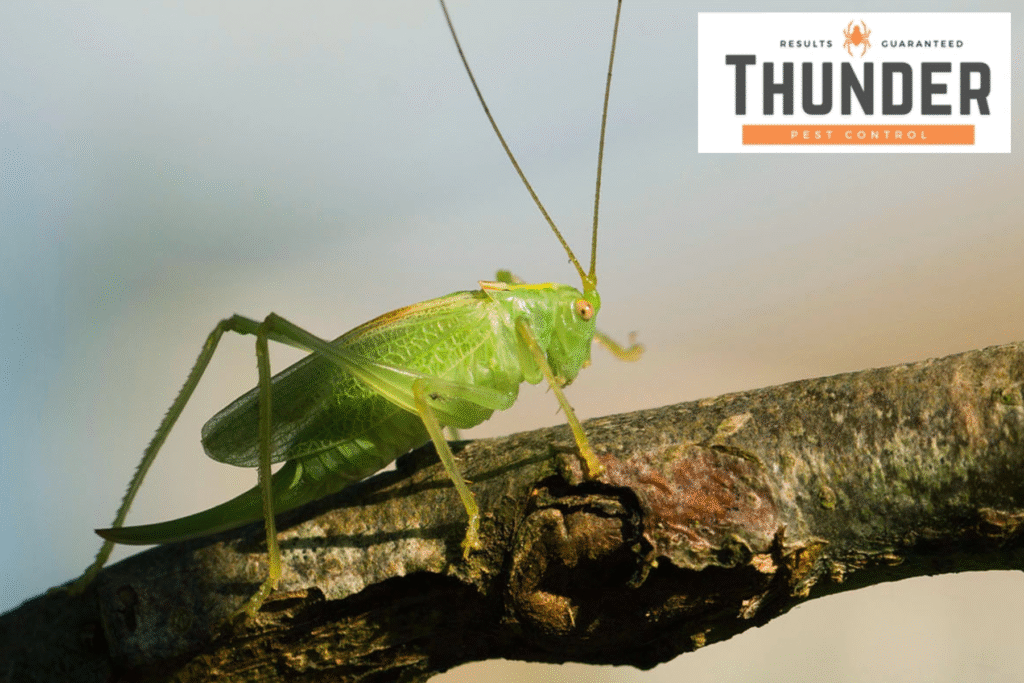Crickets are familiar creatures to many homeowners, especially during warmer months. Known for their iconic chirping, these nocturnal insects can thrive both outdoors and indoors. While most people associate crickets with grass and gardens, their diet is surprisingly diverse. Understanding what do crickets eat can help homeowners prevent infestations and protect their homes effectively.
1. Grass and Garden Plants
As herbivores, crickets commonly feed on grass and other garden plants. They often chew on leaves, stems, and seedlings, which can damage lawns and garden beds. While small numbers rarely cause major harm, larger populations can affect plant growth significantly.
2. Fruits and Vegetables
Crickets also enjoy soft fruits and vegetables. Tomatoes, melons, and leafy greens are often on their menu. They are particularly attracted to overripe or decaying produce, making compost piles a potential hotspot for cricket activity.
3. Flowers and Ornamental Plants
Crickets are not picky about edible versus decorative plants. Flowers, particularly those with tender leaves and petals, can be attractive to crickets seeking moisture and nutrients. Gardeners may notice chewed petals or leaves during cricket season.
4. Dead Insects and Organic Matter
Interestingly, crickets are opportunistic omnivores. They will scavenge on dead insects and decomposing organic matter. This behavior contributes to nutrient recycling in nature but can be unsettling when it occurs inside a home.
5. Fungi and Mold
Crickets will feed on fungi and mold when available. Moist environments such as basements, garages, and damp wood provide both food and shelter. This is one reason crickets may be found in unexpected areas indoors.
6. Paper and Cardboard
Crickets have been known to chew on paper, cardboard, and other cellulose-based materials. Books, boxes, and stored documents can be at risk if crickets are present in large numbers. While this is not their primary food source, it highlights their adaptability.
7. Fabric and Clothing
Natural fibers such as cotton, silk, and wool may occasionally attract crickets, especially if the material is stained with food or sweat. While rare, this behavior can cause minor damage to clothing or upholstery.
8. Pet Food and Human Snacks
Crickets are drawn to protein-rich foods as well. Pet food left out overnight, crumbs, and even sugary snacks can attract these pests. Proper storage in sealed containers can minimize this risk and discourage indoor cricket activity.
9. Compost and Organic Waste
Compost piles offer a rich feeding ground for crickets. Vegetable scraps, fallen leaves, and other organic waste provide both nourishment and shelter. Managing compost properly with secure lids or covered bins can help reduce cricket infestations.
10. Household Trash
Crickets can be surprisingly resourceful and will explore garbage bins for leftover food scraps. Open trash cans, particularly those containing food waste, can become a hotspot for crickets. Regular disposal and sealing of garbage are essential preventive steps.
How Cricket Diet Impacts Your Home
Understanding the diverse diet of crickets helps homeowners recognize why these insects appear in certain areas. Crickets are drawn to environments that provide moisture, food, and shelter. While their bites are rare and generally harmless, they can indirectly affect home hygiene and comfort. Learn more about whether do crickets bite to address any concerns about direct interactions.
Preventing Cricket Infestations
Preventing cricket problems involves reducing access to food sources and shelter. Homeowners can take the following steps:
- Seal Entry Points: Check for cracks, gaps, and openings in doors, windows, and foundations.
- Maintain Cleanliness: Regularly sweep, vacuum, and remove food debris.
- Proper Food Storage: Store pet food and human snacks in airtight containers.
- Outdoor Maintenance: Keep grass trimmed, remove leaf litter, and secure compost piles.
For effective and lasting solutions, professional cricket control near me services can help manage populations and prevent infestations.
When to Call Pest Control
If you notice persistent cricket activity or damage inside your home, it may be time to consult licensed professionals. Skilled pest management experts can identify problem areas, implement targeted solutions, and provide advice for long-term prevention. Residents in Oklahoma can rely on trusted Durant pest control or contact an exterminator Durant OK for comprehensive cricket management.

Conclusion
Crickets are more than just garden visitors; their adaptable diet allows them to explore a wide range of food sources, from grass and fruits to paper, fabric, and household waste. While they are generally harmless and rarely bite humans, they can become a nuisance if their populations grow indoors. Understanding their dietary habits and taking preventive measures can help homeowners maintain a cricket-free, comfortable living space.
About Thunder Pest Control
Thunder Pest Control is a trusted pest management company serving Durant, Oklahoma, and the surrounding areas. Our licensed team provides environmentally friendly and safe solutions for a variety of pests, including crickets, ants, rodents, and more. With tailored treatments and proactive strategies, we help homes and businesses stay protected and comfortable.




